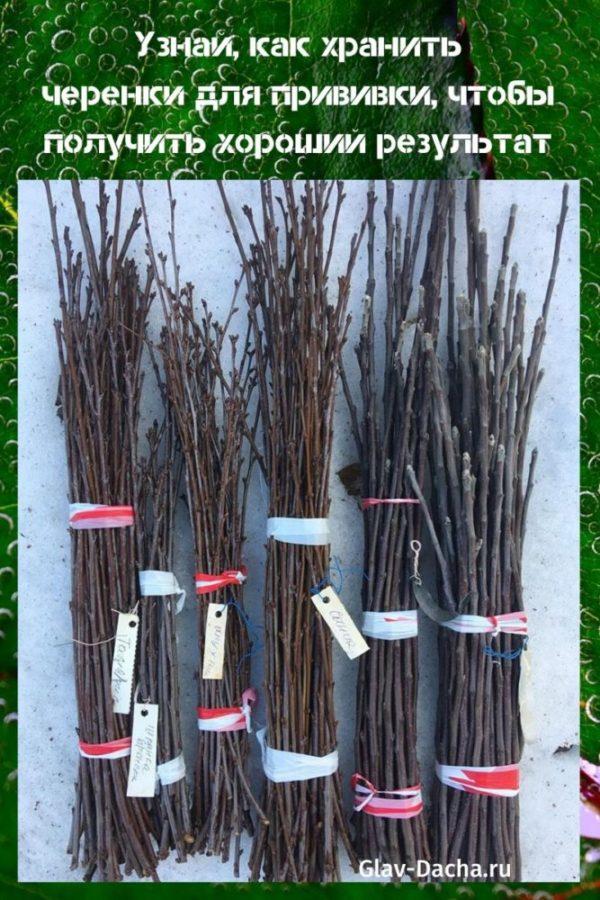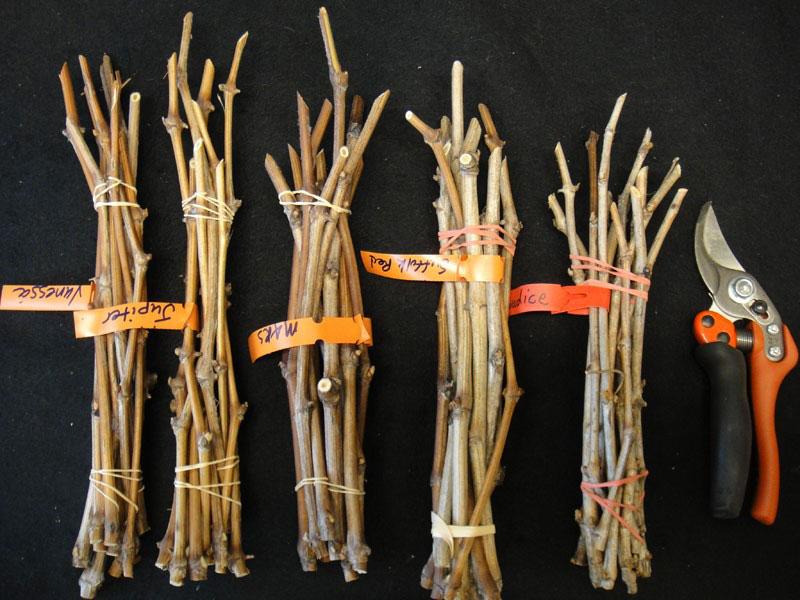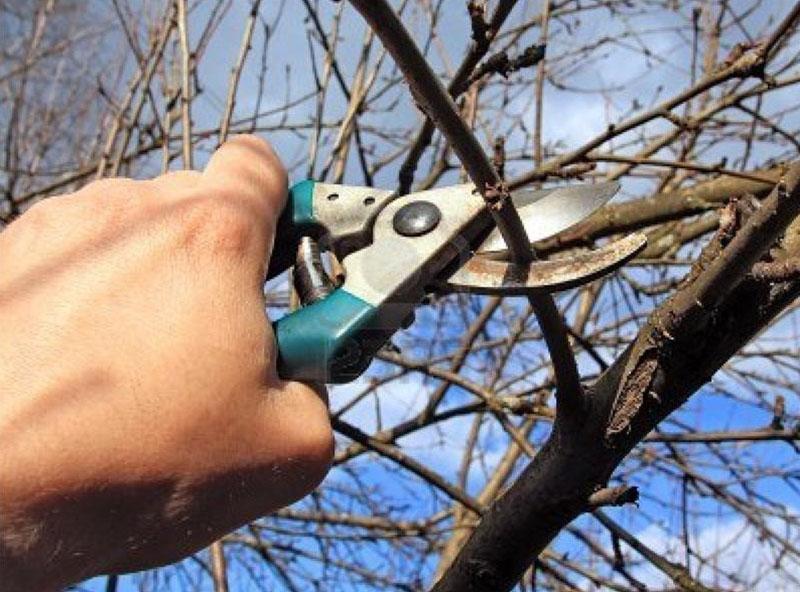Learn How to Store Grafting Cuttings to Get Good Results
 Sooner or later, every gardener needs to plant a fruit tree or other crop. How to store cuttings for grafting is theoretically represented by every garden owner. However, in practice, you can often encounter some difficulties. This is especially true for novice gardeners.
Sooner or later, every gardener needs to plant a fruit tree or other crop. How to store cuttings for grafting is theoretically represented by every garden owner. However, in practice, you can often encounter some difficulties. This is especially true for novice gardeners.
Basic rules for harvesting cuttings

A stalk is a small part of a twig that can revive life in a full-fledged fruit tree. In this case, the resulting plant will retain all the characteristics of the mother culture.
The first thing a gardener needs to know is that harvesting cuttings for grafting in spring or autumn should be carried out only from proven reliable trees, making sure of their yield and varietal characteristics.
Next, you need to use the advice of experienced gardeners:
- it is advisable to use annual shoots;
- make cuts from the outside of the crown;
- choose only strong and fully developed shoots;
- cut off shoots from the apple trees from the south.
Properly prepared cuttings are perfectly preserved, which means the grafting procedure will pass without problems.
Selection of cuttings
 What does the right stalk look like? First of all, you need to know that its size should be from 30 to 40 cm, and its thickness should be about 10 mm. Each cutting should have up to 7 developed buds. Attention should also be paid to internodes - it is desirable that they be short, since it depends on how the graft will take root. The tree or shrub from which the cutting is taken must be young and fruitful, up to 10 years old, but not younger than 3.
What does the right stalk look like? First of all, you need to know that its size should be from 30 to 40 cm, and its thickness should be about 10 mm. Each cutting should have up to 7 developed buds. Attention should also be paid to internodes - it is desirable that they be short, since it depends on how the graft will take root. The tree or shrub from which the cutting is taken must be young and fruitful, up to 10 years old, but not younger than 3.
Gardeners recommend stocking more cuttings than necessary. This should be done in case not all cuttings can be saved.
 Cuttings should be harvested only from those trees and shrubs that are pruned in a timely manner. They have good growths with apical and lateral buds. In the event that cuttings have to be cut from young plants where a full-fledged crown has not yet formed, you need to use those branches that are scheduled for removal in the spring. This is how culture itself will not suffer.
Cuttings should be harvested only from those trees and shrubs that are pruned in a timely manner. They have good growths with apical and lateral buds. In the event that cuttings have to be cut from young plants where a full-fledged crown has not yet formed, you need to use those branches that are scheduled for removal in the spring. This is how culture itself will not suffer.
Harvesting grape cuttings for storage and subsequent grafting is not much different from preparing cuttings fruit trees, however, has some nuances. It is recommended to cut from the middle part of the fertile vine. Grape cuttings can be stored all winter, and in the spring, put in water to awaken.
Procurement terms
 An equally important question is when to cut the cuttings for grafting. For this, there are certain deadlines that must be adhered to. You can harvest them twice a season: in late autumn or early winter and early spring.
An equally important question is when to cut the cuttings for grafting. For this, there are certain deadlines that must be adhered to. You can harvest them twice a season: in late autumn or early winter and early spring.
More often, gardeners use autumn harvesting. It can be started immediately after the foliage has flown around and the first severe frosts hit. Why is it important to have time to cut during this period? The plant has completely passed into the dormant stage, and the shoots have already hardened. In addition, possible pests and pathogenic microorganisms die from exposure to low temperatures.
Many gardeners know that grafting requires a dormant stalk. The shoot cut off at the beginning of winter will remain dormant until spring, until the time of the vaccination procedure. That is why gardeners are trying to complete the harvest in the fall.
In those regions where winters are not very harsh, the temperature does not drop below -15 ° C, cuttings are harvested on a winter day. For summer grafting, cuttings should be cut just before the procedure.
How to store cuttings for grafting, following the general rules
 So, the cuttings were cut correctly, the deadlines were met. Now it is important to keep them in this state, that is, asleep.
So, the cuttings were cut correctly, the deadlines were met. Now it is important to keep them in this state, that is, asleep.
The gardener has the following tasks:
- prevent damage to cuttings;
- eliminate the risks of freezing;
- maintain a state of rest;
- exclude drying.
In addition, it is necessary to ensure that mice and rodents do not have access to the cuttings.
You should not rely on your memory, especially if there are a lot of cuttings. They need to be tied into bundles, sorted by grade, and attached to each one with a label with an inscription made with waterproof ink.
The main ways to store cuttings
 Now you need to figure out in detail how to store cuttings for grafting. There are several ways, each gardener uses the one that is more accessible to him. It is worth familiarizing yourself with the most popular and choosing the right option for yourself.
Now you need to figure out in detail how to store cuttings for grafting. There are several ways, each gardener uses the one that is more accessible to him. It is worth familiarizing yourself with the most popular and choosing the right option for yourself.
In the fridge
 Storing cuttings in the refrigerator will require several plastic bags, paper, and plain cloth. If there are few shoots, then it is enough to tie them in bundles, put them in several bags and leave them in the refrigerator at a temperature not exceeding 2 ° C. At the same time, storage in the freezer will lead to the death of the cuttings, they should be chilled, not frozen. Often they are placed first in a clean cloth or paper and then in bags.
Storing cuttings in the refrigerator will require several plastic bags, paper, and plain cloth. If there are few shoots, then it is enough to tie them in bundles, put them in several bags and leave them in the refrigerator at a temperature not exceeding 2 ° C. At the same time, storage in the freezer will lead to the death of the cuttings, they should be chilled, not frozen. Often they are placed first in a clean cloth or paper and then in bags.
For these purposes, the lower section of the refrigerator is used, where vegetables are stored. The temperature in this compartment is not higher than 4 ° C, so the cuttings will remain in the desired condition until mid-February, and then the buds will begin to germinate, especially for stone fruit species.
In the cellar
 One of the oldest ways to store graft material is in the cellar. Here gardeners need to choose how best to store the cuttings for grafting, as there are several options. Many people use burlap or other rough cloth, sand or sawdust, but some prefer more complex materials, such as peat or moss, which is periodically moistened.
One of the oldest ways to store graft material is in the cellar. Here gardeners need to choose how best to store the cuttings for grafting, as there are several options. Many people use burlap or other rough cloth, sand or sawdust, but some prefer more complex materials, such as peat or moss, which is periodically moistened.
If it is possible to use sawdust, then first you need to thoroughly moisten them, and then place the cuttings in them with the slices down. Previously, they must be placed in opaque bags, without tying too tightly - the processes must have access to air.
It is possible to store the material in wet sand, but this will require wooden crates. Bunches of shoots are placed in boxes with openings for fresh air, and sprinkled with wet sand on top. How to determine the level of humidity required for storage with this method? There is a simple way for this. You need to pick up sand in your hand and squeeze tight. If moisture is felt, but water does not drip, then the moisture is suitable. The temperature in the cellar should be between 0 and 2 ° C. This mode is suitable for cuttings, and for other vegetable crops and other stocks. As for the humidity in the cellar, it should be in the range of 60-70%.
Outside
 There are two options for storing cuttings outdoors: in the snow and in sawdust. For those gardeners who live in regions with good snow cover, this is the best option. Usually, for this, gardeners dig a trench of a suitable size to a depth of 30-40 cm in advance, cover it with coniferous branches, then put the material there, covering it with spruce branches. Then it is sprinkled with earth, sawdust, straw. In this case, the thickness of the snow cover must be at least half a meter throughout the winter.Many do not dig a hole, keeping the packed cuttings under a layer of snow for at least half a meter. To avoid melting, it is covered with sawdust or a layer of straw.
There are two options for storing cuttings outdoors: in the snow and in sawdust. For those gardeners who live in regions with good snow cover, this is the best option. Usually, for this, gardeners dig a trench of a suitable size to a depth of 30-40 cm in advance, cover it with coniferous branches, then put the material there, covering it with spruce branches. Then it is sprinkled with earth, sawdust, straw. In this case, the thickness of the snow cover must be at least half a meter throughout the winter.Many do not dig a hole, keeping the packed cuttings under a layer of snow for at least half a meter. To avoid melting, it is covered with sawdust or a layer of straw.
For those regions that are subject to prolonged thaws, storage of shoots in sawdust is indicated. Usually, for this they choose the northern side of the house, put the prepared cuttings on wet sawdust. Sawdust is also poured on top, with a layer of at least 15 cm. When they freeze, a layer of dry sawdust is poured (40 cm). Then everything is covered with a film. It is believed that sawdust is the best way to preserve apple cuttings for later vaccinations.
Other storage methods
 Gardeners have found other ways to store grafting material that are equally successful. These include storage in a plastic bottle, food container, and even a net on a tree outside the window. A good way to preserve the scions is in fresh potatoes. To do this, cuttings are stuck into the tuber with slices. So they are stored until spring.
Gardeners have found other ways to store grafting material that are equally successful. These include storage in a plastic bottle, food container, and even a net on a tree outside the window. A good way to preserve the scions is in fresh potatoes. To do this, cuttings are stuck into the tuber with slices. So they are stored until spring.
How to check the safety after winter
 When the winter period is over and the grafting process is ahead, you need to check the condition of the cuttings. You need to get them out of the shelter at the very last moment before vaccination.
When the winter period is over and the grafting process is ahead, you need to check the condition of the cuttings. You need to get them out of the shelter at the very last moment before vaccination.
First, stone fruit crops should be grafted, since they begin sap flow earlier than other plants. Then you can start grafting pome fruit trees.
The preservation check consists in a thorough examination. Signs of a preserved cutting:
- the bark is smooth;
- when bent, the handle is quite elastic, does not break;
- the kidneys are pressed tightly to the trunk;
- the scales are smooth;
- light-colored wood on the cut;
- the kidney on the cut is green, without brown specks.
It will not be superfluous to conduct some kind of frostbite test. On the cuttings, you need to make a couple of cuts and place them in fresh water. It will be transparent if the cuttings have been successfully preserved and have not lost their main characteristics; if they are frozen, the water will acquire a brown color.
The harvesting of cuttings and their subsequent storage is an important component for a successful grafting. For the procedure to be successful and the fruit tree to please with the harvest, it is necessary to harvest the material in a timely manner, taking into account all the rules and nuances. Proper storage is also of great importance for culture. Each gardener can choose the method independently, based on the resources available to him.